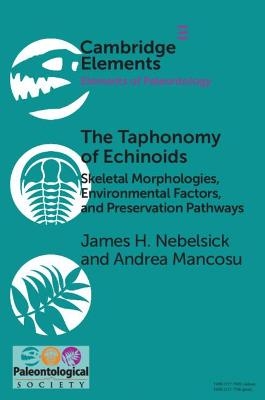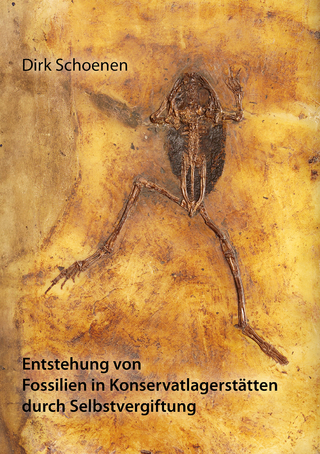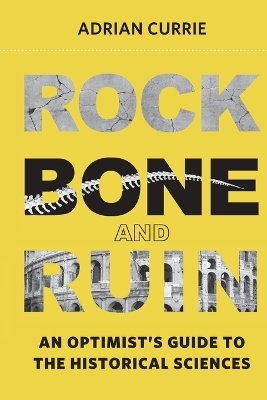
The Taphonomy of Echinoids
Skeletal Morphologies, Environmental Factors, and Preservation Pathways
Seiten
2021
Cambridge University Press (Verlag)
978-1-108-80999-3 (ISBN)
Cambridge University Press (Verlag)
978-1-108-80999-3 (ISBN)
Echinoid taphonomy biases have often impacted the study of echinoid evolution, diversity, and ecology. This Element reviews morphological features, preservation processes, and taphonomic pathways using recent studies and fossil taxa.
The study of echinoid evolution, diversity, and ecology has always suffered from the fact that they are represented by taxa showing widely differing architectural designs of their multi-plated skeletons, inhabiting a large range of marine paleoenvironments, which result in highly varying taphonomic biases dictating their presence and recognition. This Element addresses the taphonomy of echinoids and includes: a general introduction to the morphological features of echinoids that play a role in their preservation; a review of processes which play an important role in the differential preservation of both regular and irregular echinoids including predation and transport; a summary of taphonomic pathways included in actualistic studies for recent sea urchins and then reconstructed for fossil taxa; and finally, a case study of the variation of echinoid taphonomy across a shelf gradient using the rich Miocene echinoid fauna of Sardinia.
The study of echinoid evolution, diversity, and ecology has always suffered from the fact that they are represented by taxa showing widely differing architectural designs of their multi-plated skeletons, inhabiting a large range of marine paleoenvironments, which result in highly varying taphonomic biases dictating their presence and recognition. This Element addresses the taphonomy of echinoids and includes: a general introduction to the morphological features of echinoids that play a role in their preservation; a review of processes which play an important role in the differential preservation of both regular and irregular echinoids including predation and transport; a summary of taphonomic pathways included in actualistic studies for recent sea urchins and then reconstructed for fossil taxa; and finally, a case study of the variation of echinoid taphonomy across a shelf gradient using the rich Miocene echinoid fauna of Sardinia.
1. General Introduction; 2. Multi-plated Skeletons and Regeneration; 3. Influence of Test Architecture and Environment; 4. Predation and Parasitism as Taphonomic Agents; 5. Preservation Pathways in the Recent and Past; 6. A Case Study of Echinoid Preservation: The Miocene of Sardinia; 7. Conclusions and Future Work; References.
| Erscheinungsdatum | 18.10.2021 |
|---|---|
| Reihe/Serie | Elements of Paleontology |
| Zusatzinfo | Worked examples or Exercises |
| Verlagsort | Cambridge |
| Sprache | englisch |
| Maße | 151 x 228 mm |
| Gewicht | 93 g |
| Themenwelt | Naturwissenschaften ► Biologie |
| Naturwissenschaften ► Geowissenschaften ► Mineralogie / Paläontologie | |
| ISBN-10 | 1-108-80999-5 / 1108809995 |
| ISBN-13 | 978-1-108-80999-3 / 9781108809993 |
| Zustand | Neuware |
| Haben Sie eine Frage zum Produkt? |
Mehr entdecken
aus dem Bereich
aus dem Bereich
Buch | Softcover (2024)
Shaker (Verlag)
19,80 €
An Optimist's Guide to the Historical Sciences
Buch | Softcover (2024)
MIT Press (Verlag)
34,55 €


